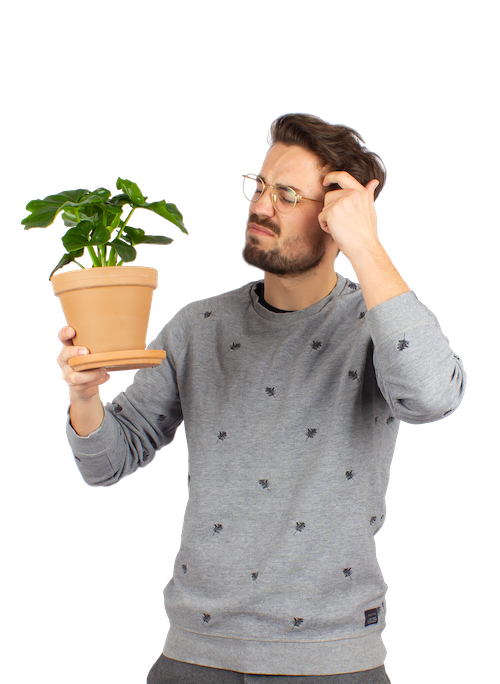The most common cause of death in the plant world is overwatering and the second is under-watering. Now that's a dilemma! Plants are finicky things and they can be extremely picky when it comes to their watering needs. To help, we have outlined all of the information you need about watering. Your green amigos will never be too thirsty now!
How much water do plants need?
Just like no two snowflakes are alike, no two plants are alike when it comes to their watering needs. Each plant is unique and requires a different amount of care. To know how much water your plant requires, check its information and care page on our website. Or go to our Plantsome app, which has over 150 plants. It will give you all the information you need about your plants, as well as reminders to let you know exactly when your plants need water. And of course, if you have any further questions surrounding plant care, feel free to reach out at hello@plantsome.ca, Facebook, or Instagram!
How to know when your plant needs water
Okay, so now that we know that each plant has different watering needs, how do you know when they need water? As we mentioned, the Plantsome app can help by letting you know when your green friends are thirsty. But to get to that watering sweet spot, we recommend having a good understanding of your plants in addition to using the app. There are three main ways that you can use to tell whether your plants need a drink:
1) Looking at your plants
"Slightly" more dramatic plants like Baloo and Lilly let you know when they're thirsty by drooping their leaves or turning yellow and brown. This is common in tropical plants and green-leafed ones that require a lot of water. But merely looking at your plants to see how thirsty they are is never foolproof. Many plants often droop and yellow from over watering. And succulent-like plants such as Gus and Lucky often hide how thirsty they really are.
2) The finger test
A more accurate test than merely looking at your plants is to stick your finger about 2-3 inches into their soil. For non-succulents and tropical plants, you should re-water once the top 2-3 inches of their soil is dry and the bottom is only slightly moist. For succulents and cacti, the soil should be even drier and the bottom portion should not be moist at all.
3) Pick it up
Another great way to test whether your smaller plants need water is to pick them up. This can get more complicated with a heavy ornamental pot, but with practice, this can be one of the best tests. First, pick up your plant after you've watered it to see how heavy it is. Afterwards, pick it up again when you think it may be time to re-water and water it once it feels lighter. The lighter your plant is, the more water it needs.

How do you water your plants?
There are many ways to water your plants and most of them depend on the type of pot you have. A general rule is that plants prefer to be left until they absolutely need to be watered and then once they do, they like a nice long soak either in the sink or with a watering can. Another important factor is that plants do not like to sit in excess water, as this causes root rot, so ensure that you thoroughly drain the excess water from your plants every time.
1) Growers pot inside an ornamental pot without drainage
If your plant is in a growers pot inside an ornamental one, there are various ways you can water it. First, you can water your plant directly with a watering can, ensuring that you do not get its leaves soaked, as this can cause them to rot. Once your plant has been directly watered, leave it to soak up to half an hour and then drain the remaining water inside its ornamental pot. Another way to do this is by bringing your plant in its grower's pot to the sink and watering it there before placing it once again in its ornamental pot.
2) Repotted into an ornamental pot with drainage
If your plant has been repotted into a pot with drainage, simply water it thoroughly either at the sink or on top of material that can catch excess water and let it drain for up to half an hour.
3) Repotted into an ornamental pot without drainage
If your plant has been repotted into an ornamental pot without drainage holes, water it either with a can or at the sink and let it soak for up to half an hour. Once it has soaked, tip the remaining water into a sink to avoid any root rot.

Okay, but what about humidity?
In general, all plants like to be in an environment with humidity at or greater than 40%, so that their pores can breathe and produce oxygen. The average home has humidity at around 30%, so getting a humidifier or occasionally spraying your plants with a mist of water is always a good idea. But it isn't necessary for every plant. A general rule is that the thinner a plant's leaves are, the more it needs humidity. An example of these are tropical plants like Sophia and Carl who love humidity at around 60% or higher. For more info about plants and humidity read our past blog!
Now that you know everything about watering, your plants will never go thirsty again! Have any more plant-related questions or concerns? Feel free to reach out at hello@plantsome.ca | Facebook | Instagram





